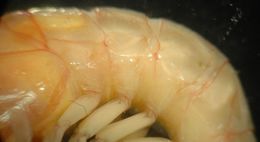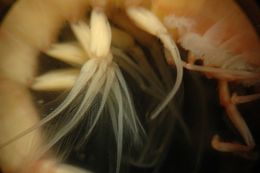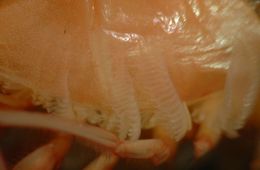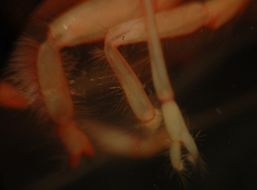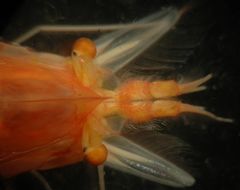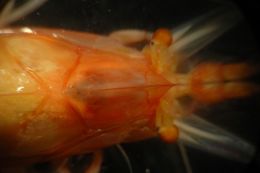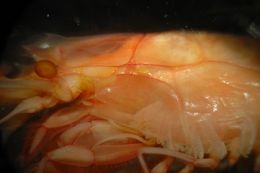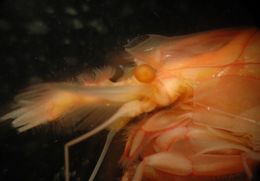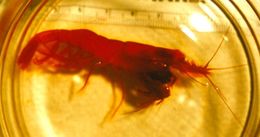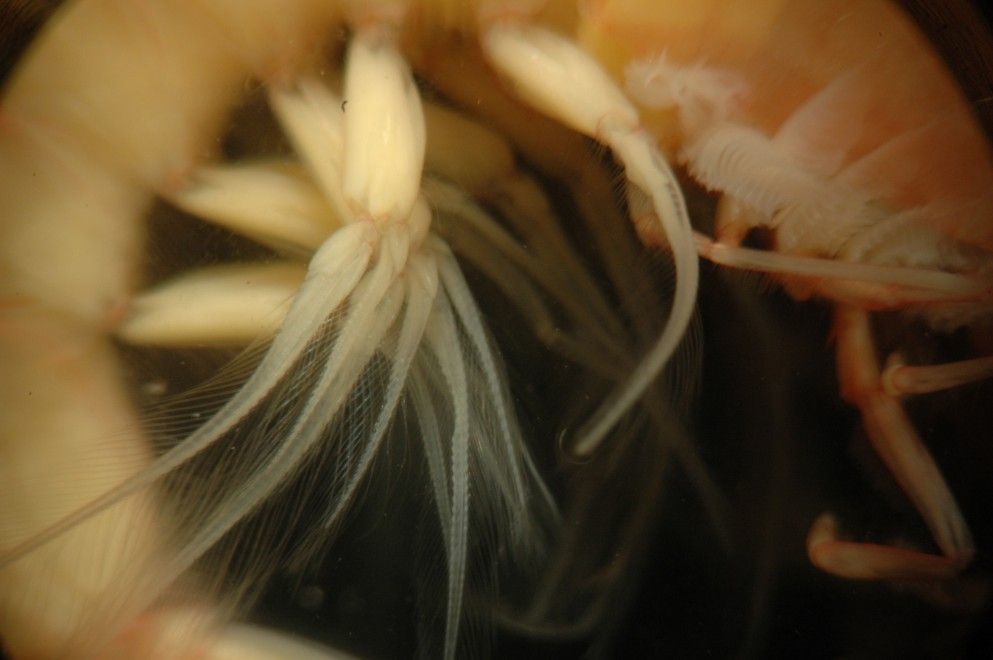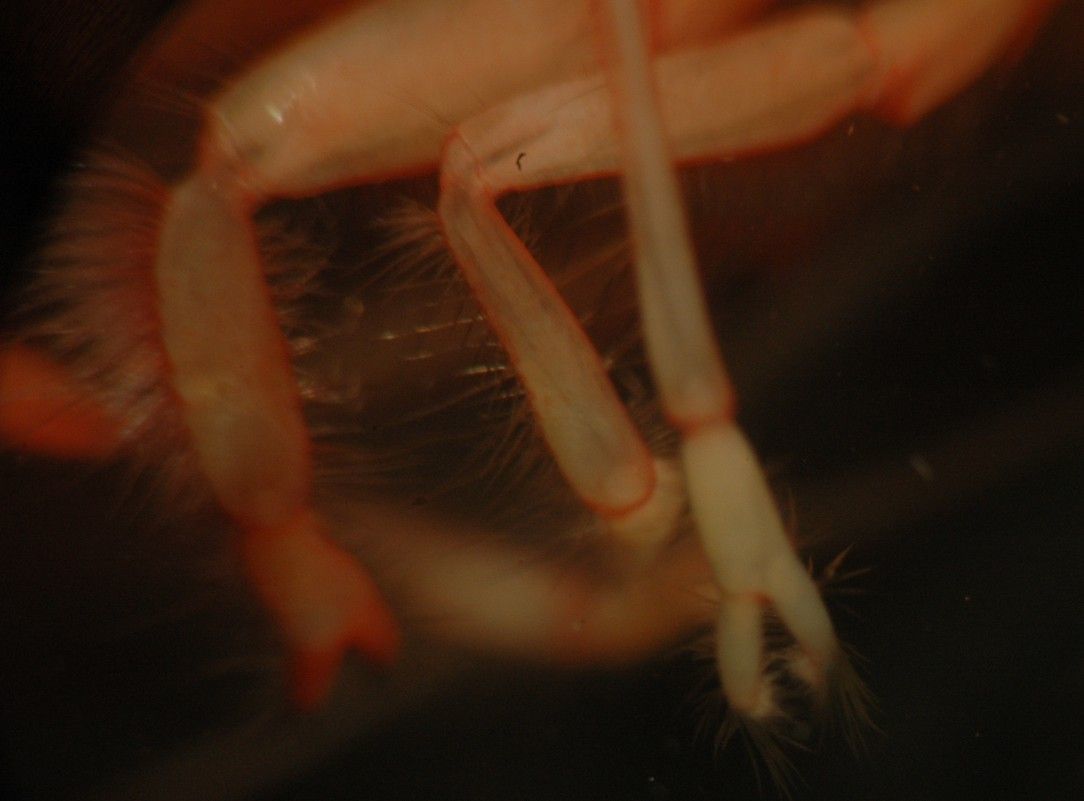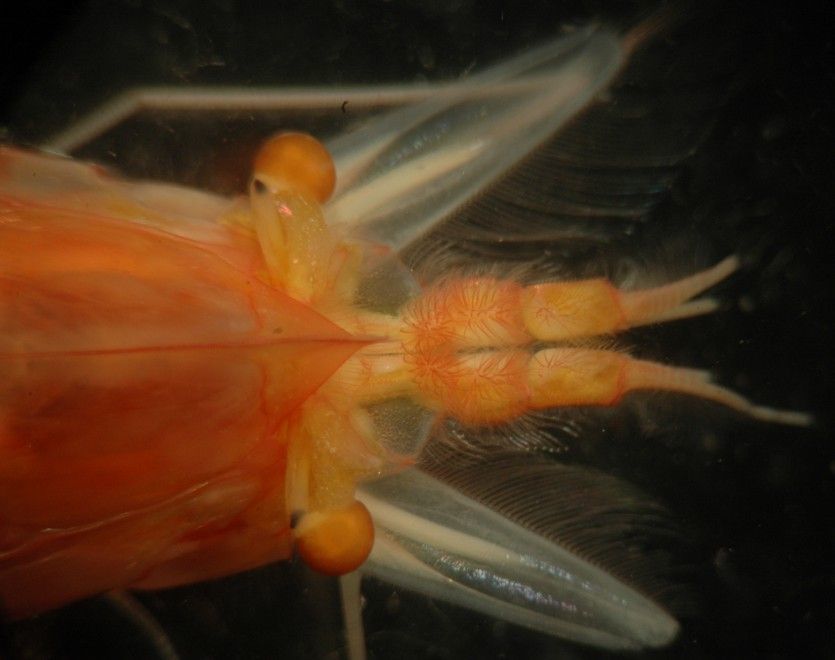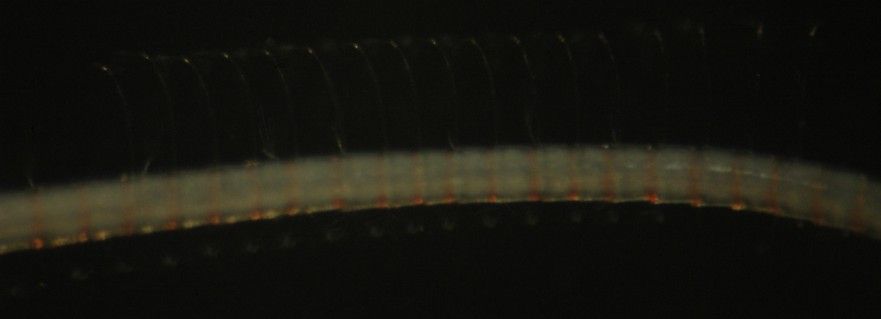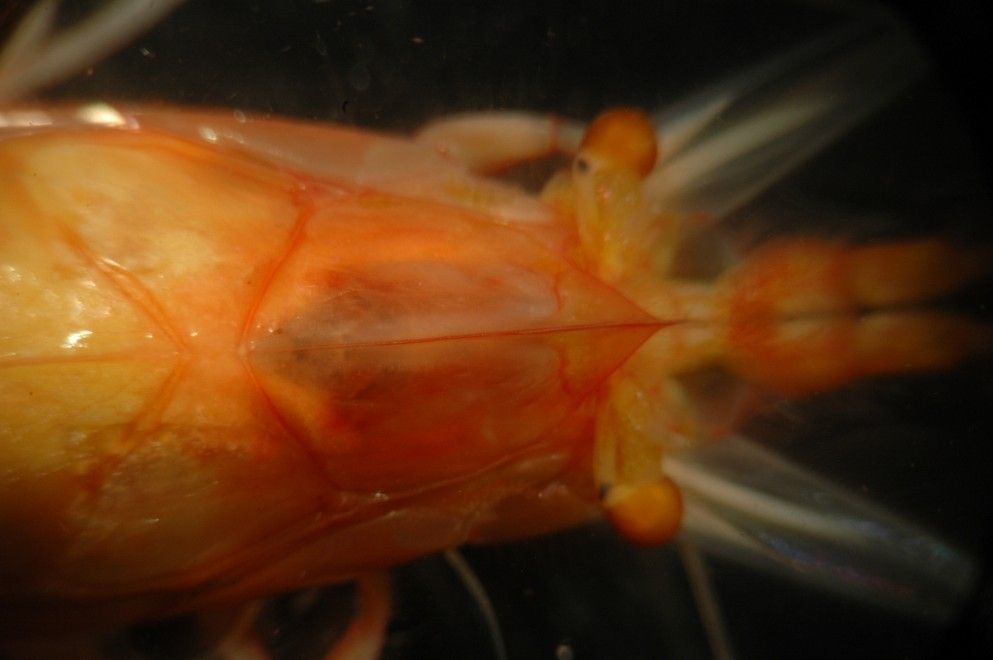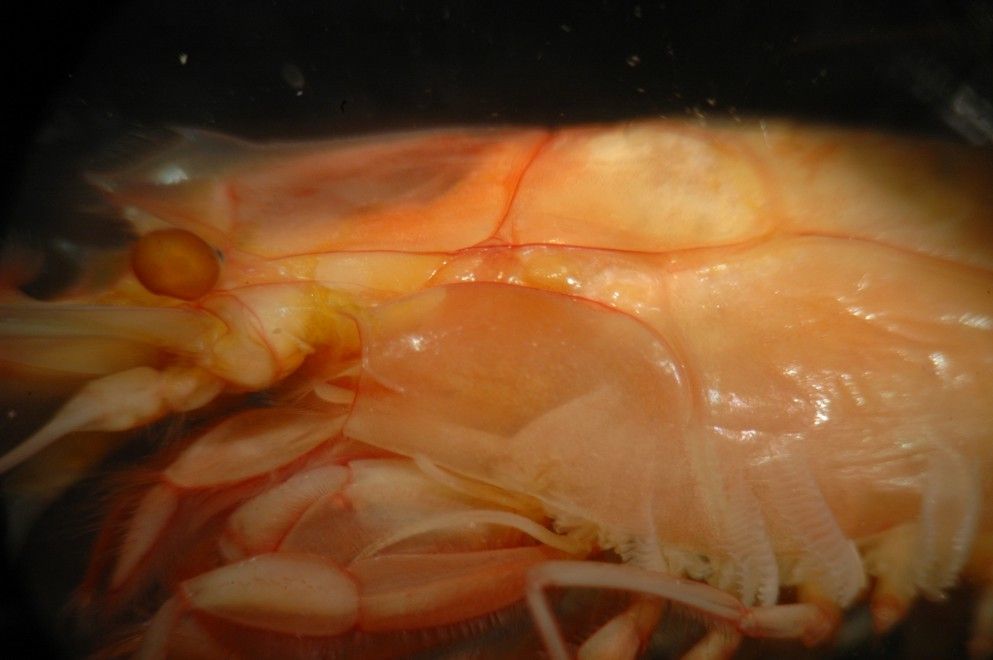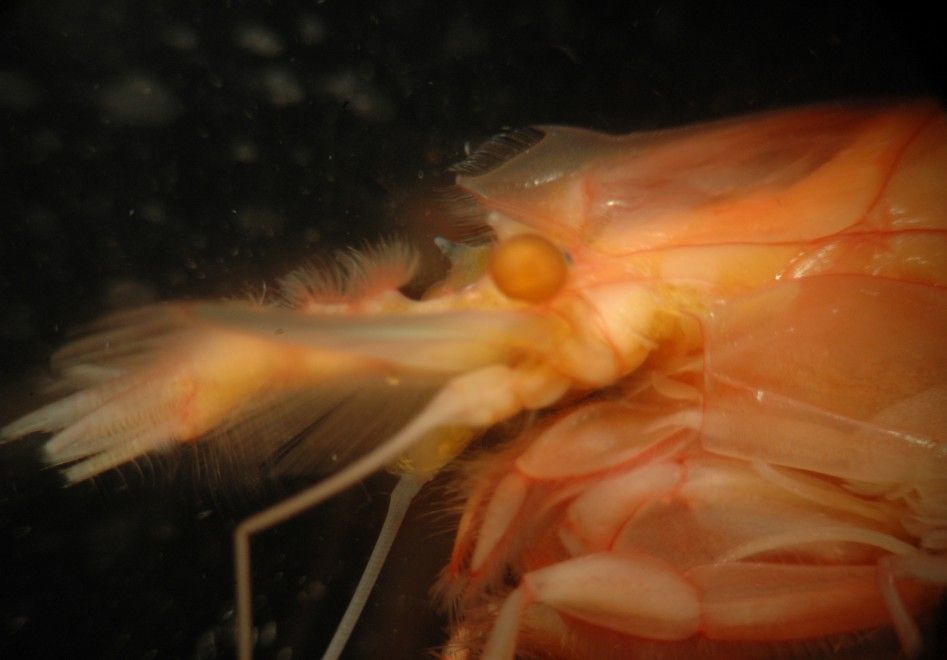-
The epimeron of abdominal segment 2 does not overlap that of segments 1 and 3. This view shows the thorax to the left and abdominal segments 1-4 with the bases of the pleopods. Photo is of a preserved specimen.
-
This animal swims through the water with its feathery pleopods. The head of this preserved specimen is to the right.
-
In this photo the dendrobranchiate (tree-like in structure) gills can be seen hanging from below the carapace. In this species the gills are podobranchs, which is an epipod gill attached to the coxa (basal segment) of the legs. These podobranch gills are arising, left to right, from the third maxilliped and from pereopods 1-3. Photo of a preserved specimen
-
As a member of family Penaeidae, pereopods 1-3 are all chelate. This photo of a preserved specimen shows the chelae on pereopods 1 (left) to 3 (right).
-
. Both the antennules (first antennae) and the antennal scale have prominent setae which together make the animal look like it has a thick moustache from a distance. Note also the long second antennae, visible on the left side of the animal (top), which extends forward, has a sharp bend, and has a long flagellum extending back. Photo of preserved specimen.
-
The long antennal flagellum is lined along one side with a double row of curved setae which arch outwards and then curve toward one another like the ribs of a vacuum cleaner hose. Shorter, enervated setae are found in the middle of the circle formed by the long setae. Together, this structure forms a lateral-line like detector of near-field sound or vibrations.
-
As can be seen in this dorsal view of a preserved specimen, the curving vertical grooves on the carapace cross the mid-dorsal ridge but are not interrupted by it.
-
The same grooves plus other carinae can be seen here in this side view of the carapace
-
The distinctive rostrum has a dorsal spine, a line of forward-pointing setae, and an anterior spine.
-
The telson is shorter than the uropods. It ends with only one pair of stout median spines, (with a row of setae between them)
-
Bentheogennema burkenroadi, bathypelagic 100 mi off Point Conception, CA (Photo by: Dave Cowles, Sept 1995)


